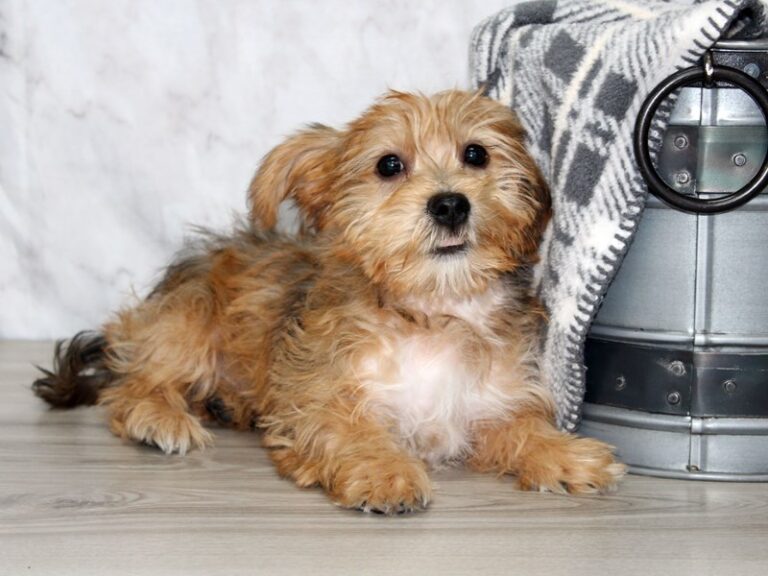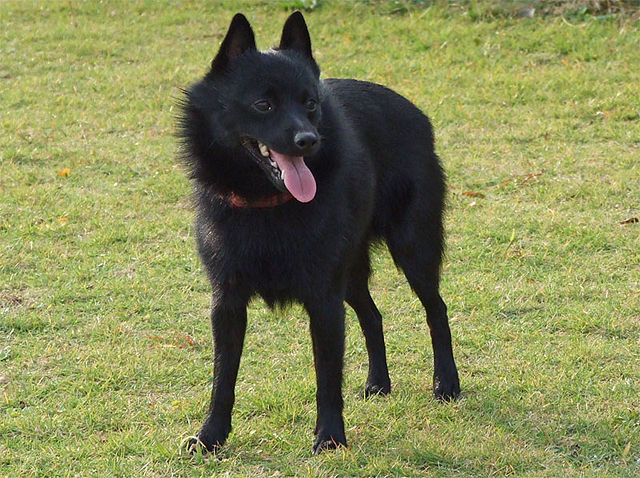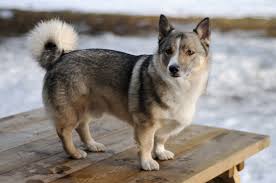Yorkshire Terrier vs Brussels Griffon: Breed Comparison Guide
When choosing between a Yorkshire Terrier and a Brussels Griffon, potential dog owners face a delightful dilemma. Both breeds pack enormous personality into small packages, but they each bring distinct characteristics to the table. This comprehensive comparison will help you understand the unique traits of the Yorkie and the Belgian Griffon (also known as the Griffon Bruxellois, Griffon Belge, or Petit Brabancon) to determine which might be the perfect fit for your lifestyle.
A Tale of Two Origins: From Working Dogs to Beloved Companions
The Yorkshire Terrier’s story begins in Victorian-era England, specifically in Yorkshire and Lancashire, where they were bred to catch rats in textile mills and coal mines. Despite their diminutive size, Yorkies were working-class heroes, efficiently controlling vermin populations in industrial settings. Their development came from various terrier breeds, including the now-extinct Waterside Terrier, and they were originally much larger than today’s toy-sized version.

The Brussels Griffon (Griffon Bruxellois) has equally humble beginnings in Belgium, where they started as ratters in horse stables. The breed evolved from a small, rough-coated dog called the Smousje, traditionally kept in Brussels to hunt vermin. Through careful breeding with the Pug, English Toy Spaniel, and Ruby Spaniel, the modern Brussels Griffon emerged in the late 1800s. This breeding program created three distinct varieties: the Griffon Bruxellois (red rough coat), Griffon Belge (black and tan rough coat), and the Petit Brabancon (smooth coat).

Physical Characteristics: Small Dogs with Big Personalities
Size and Weight Comparison
Both breeds fall into the toy dog category, but there are subtle differences in their size specifications. Yorkshire Terriers typically stand 7-8 inches tall at the shoulder and weigh between 4-7 pounds according to American Kennel Club standards. Their small size makes them one of the most popular apartment dogs worldwide.
The Brussels Griffon is slightly more robust, standing 7-10 inches tall and weighing 8-10 pounds on average. Despite being marginally larger than Yorkies, they’re still considered a small breed. Their compact size hasn’t diminished their self-assured nature – a trait that often surprises first-time observers.
Investment Considerations: Initial and Ongoing Costs
When it comes to purchasing a puppy, both breeds command premium prices due to their popularity and relatively small litter sizes. In the United States, a purebred Yorkshire Terrier from a reputable breeder typically costs between $1,200 and $2,500. Show-quality Yorkies can command prices upward of $3,500.
Brussels Griffons tend to be more expensive, with prices ranging from $2,000 to $5,000 for a well-bred puppy. Their relative rarity contributes to these higher prices, as does the complexity of breeding them properly. The Petit Brabancon variety might command even higher prices due to its unique smooth coat characteristic.
Intelligence and Trainability: Smart but Strong-Willed
Yorkshire Terriers are highly intelligent dogs with a keen ability to learn commands and tricks. Their working dog heritage contributes to their quick-thinking nature, though this same trait can make them somewhat stubborn. According to canine intelligence studies, Yorkies demonstrate above-average working intelligence, typically learning new commands in 15-25 repetitions.
The Brussels Griffon matches this intelligence level but often shows more sensitivity during training. Research suggests they respond exceptionally well to positive reinforcement techniques. Their human-like expressions – a breed characteristic – often reflect their deep emotional intelligence and ability to read their owner’s moods.
Temperament and Personality: Little Dogs with Large Hearts
Both breeds exhibit strong, distinctive personalities that charm their owners. Yorkshire Terriers are known for their confident, sometimes feisty demeanor. Despite their small size, they often display typical terrier traits: boldness, determination, and occasionally a touch of stubbornness. They’re alert and can be territorial, making them excellent watchdogs despite their tiny stature.
Brussels Griffons possess an almost human-like personality, often described as having an “old soul.” They form intense bonds with their owners and can be somewhat clingy. The Griffon Bruxellois variety, in particular, is known for its expressive face and ability to convey complex emotions through facial expressions alone.

Family Compatibility and Social Needs
Children and Family Life
While both breeds can do well with children, proper supervision and training are essential. Yorkies may be better suited to families with older children who understand how to handle small dogs carefully. Their small size makes them vulnerable to accidental injury during rough play.
Brussels Griffons, including the Petit Brabancon, typically do better with older children or adults. They can be less tolerant of rough handling and may become stressed in chaotic environments. Early socialization is crucial for both breeds to ensure they develop into well-adjusted family members.
Apartment Living and Alone Time
Both breeds adapt well to apartment living, though for different reasons. Yorkies are naturally small and can get adequate exercise even in limited spaces. They’re also relatively adaptable when it comes to being left alone, though they should not be left for extended periods.
Brussels Griffons, while also suitable for apartment living, tend to be more dependent on human companionship. They can develop separation anxiety if left alone frequently, making them better suited to households where someone is usually home.
Maintenance and Care Requirements
Grooming and Shedding
Yorkshire Terriers are famous for their long, silky coats that require significant maintenance. While they’re often cited as hypoallergenic because they don’t shed much, their coat needs daily brushing and regular professional grooming. Their hair continues growing like human hair, requiring regular trimming to maintain manageable length.
Brussels Griffons come in both rough and smooth-coated varieties (Petit Brabancon). The rough-coated Griffon Bruxellois and Griffon Belge require regular stripping of dead hair, while the smooth-coated variety needs less intensive grooming. All varieties shed minimally but require regular maintenance to keep their coat healthy.

Health Considerations and Longevity
Both breeds face some common health challenges associated with small dogs.
Yorkshire Terriers may experience:
- Patellar luxation
- Dental problems
- Progressive retinal atrophy
- Portosystemic shunt
- Collapsed trachea
Brussels Griffons are prone to:
- Syringomyelia
- Eye problems
- Hip dysplasia
- Patellar luxation
- Respiratory issues (especially in hot weather)
Life expectancy for both breeds typically ranges from 12-15 years, with proper care and regular veterinary check-ups being essential for longevity.
Activity Levels and Exercise Needs
Despite their small size, both breeds require regular exercise to maintain good physical and mental health. Yorkshire Terriers are energetic and enjoy short walks, play sessions, and mental stimulation through training or puzzle toys. They typically need 20-30 minutes of dedicated exercise daily.
Brussels Griffons have moderate energy levels and require similar exercise duration but may be more intense during their active periods. They excel in dog sports like agility and obedience, which can provide both physical exercise and mental stimulation.
Are They Right for First-Time Dog Owners?
Yorkshire Terriers can be good choices for first-time dog owners who are committed to training and socialization. Their small size makes them manageable, though their grooming needs and occasional stubbornness require dedication and patience.
Brussels Griffons, including the Petit Brabancon, may present more challenges for novice owners. Their sensitive nature and strong attachment to their owners mean they require an understanding of canine psychology and consistent training approaches. However, their intelligence and affectionate nature can make them rewarding companions for dedicated first-time owners who are willing to learn and adapt to their needs.
Conclusion: Making Your Choice
Both Yorkshire Terriers and Brussels Griffons make wonderful companions for the right owners. Yorkies tend to be more adaptable and independent, making them suitable for busier households or those new to dog ownership. Their grooming needs are significant but predictable, and their confident personalities make them engaging pets.
Brussels Griffons, whether the Griffon Bruxellois, Griffon Belge, or Petit Brabancon variety, require more emotional investment and consistency in their routine. They form incredibly strong bonds with their owners and can be more sensitive to changes in their environment. However, their unique personalities and expressive faces make them extraordinary companions for those who can provide the attention and stability they crave.
The choice between these breeds ultimately depends on your lifestyle, experience with dogs, and the specific traits you value most in a companion. Both breeds offer loyalty, affection, and distinctive personalities in small packages, ensuring that either choice can bring joy and companionship to the right home.
Size and Weight Comparison
Both breeds fall into the toy dog category, but there are subtle differences in their size specifications. Yorkshire Terriers typically stand 7-8 inches tall at the shoulder and weigh between 4-7 pounds according to American Kennel Club standards. Their small size makes them one of the most popular apartment dogs worldwide.
The Brussels Griffon is slightly more robust, standing 7-10 inches tall and weighing 8-10 pounds on average. Despite being marginally larger than Yorkies, they’re still considered a small breed. Their compact size hasn’t diminished their self-assured nature – a trait that often surprises first-time observers.
Investment Considerations: Initial and Ongoing Costs
When it comes to purchasing a puppy, both breeds command premium prices due to their popularity and relatively small litter sizes. In the United States, a purebred Yorkshire Terrier from a reputable breeder typically costs between $1,200 and $2,500. Show-quality Yorkies can command prices upward of $3,500.
Brussels Griffons tend to be more expensive, with prices ranging from $2,000 to $5,000 for a well-bred puppy. Their relative rarity contributes to these higher prices, as does the complexity of breeding them properly. The Petit Brabancon variety might command even higher prices due to its unique smooth coat characteristic.
Intelligence and Trainability: Smart but Strong-Willed
Yorkshire Terriers are highly intelligent dogs with a keen ability to learn commands and tricks. Their working dog heritage contributes to their quick-thinking nature, though this same trait can make them somewhat stubborn. According to canine intelligence studies, Yorkies demonstrate above-average working intelligence, typically learning new commands in 15-25 repetitions.
The Brussels Griffon matches this intelligence level but often shows more sensitivity during training. Research suggests they respond exceptionally well to positive reinforcement techniques. Their human-like expressions – a breed characteristic – often reflect their deep emotional intelligence and ability to read their owner’s moods.
Temperament and Personality: Little Dogs with Large Hearts
Both breeds exhibit strong, distinctive personalities that charm their owners. Yorkshire Terriers are known for their confident, sometimes feisty demeanor. Despite their small size, they often display typical terrier traits: boldness, determination, and occasionally a touch of stubbornness. They’re alert and can be territorial, making them excellent watchdogs despite their tiny stature.
Brussels Griffons possess an almost human-like personality, often described as having an “old soul.” They form intense bonds with their owners and can be somewhat clingy. The Griffon Bruxellois variety, in particular, is known for its expressive face and ability to convey complex emotions through facial expressions alone.
Family Compatibility and Social Needs
Children and Family Life
While both breeds can do well with children, proper supervision and training are essential. Yorkies may be better suited to families with older children who understand how to handle small dogs carefully. Their small size makes them vulnerable to accidental injury during rough play.
Brussels Griffons, including the Petit Brabancon, typically do better with older children or adults. They can be less tolerant of rough handling and may become stressed in chaotic environments. Early socialization is crucial for both breeds to ensure they develop into well-adjusted family members.
Apartment Living and Alone Time
Both breeds adapt well to apartment living, though for different reasons. Yorkies are naturally small and can get adequate exercise even in limited spaces. They’re also relatively adaptable when it comes to being left alone, though they should not be left for extended periods.
Brussels Griffons, while also suitable for apartment living, tend to be more dependent on human companionship. They can develop separation anxiety if left alone frequently, making them better suited to households where someone is usually home.
Maintenance and Care Requirements
Grooming and Shedding
Yorkshire Terriers are famous for their long, silky coats that require significant maintenance. While they’re often cited as hypoallergenic because they don’t shed much, their coat needs daily brushing and regular professional grooming. Their hair continues growing like human hair, requiring regular trimming to maintain manageable length.
Brussels Griffons come in both rough and smooth-coated varieties (Petit Brabancon). The rough-coated Griffon Bruxellois and Griffon Belge require regular stripping of dead hair, while the smooth-coated variety needs less intensive grooming. All varieties shed minimally but require regular maintenance to keep their coat healthy.
Health Considerations and Longevity
Both breeds, while generally healthy when properly bred, face certain breed-specific health challenges that potential owners should be aware of. Regular veterinary check-ups and genetic testing of breeding pairs can help minimize these risks.
Yorkshire Terriers commonly experience several health conditions:
Dental Problems: Due to their small mouths, Yorkies are particularly prone to dental overcrowding, tooth decay, and early tooth loss. Regular dental cleaning and maintenance are essential, with some dogs requiring professional cleaning as frequently as every 6-8 months.
Patellar Luxation: This condition, where the kneecap dislocates or moves out of its normal position, affects many small breeds including Yorkies. Severity can range from mild to severe, potentially requiring surgical intervention in serious cases. Research published in the Journal of Small Animal Practice indicates this condition affects approximately 1 in 4 Yorkshire Terriers.
Progressive Retinal Atrophy (PRA): This inherited condition causes gradual deterioration of the retina, potentially leading to blindness. Genetic testing can identify carriers of this condition, making it crucial to obtain puppies from breeders who perform such screening.
Portosystemic Shunt: This serious liver condition occurs when blood bypasses the liver, preventing proper toxin filtration. Studies suggest Yorkies have a higher predisposition to this condition compared to many other breeds. Early detection through blood tests is crucial for successful management.
Collapsed Trachea: This condition causes difficulty breathing and a characteristic “honking” cough. Recent veterinary studies suggest that up to 20% of Yorkshire Terriers may be affected by some degree of tracheal collapse during their lifetime.
Hypoglycemia: Particularly dangerous in puppies and young adults, this condition requires careful monitoring of food intake and energy expenditure.
Brussels Griffons face their own set of health challenges:
Syringomyelia: This serious neurological condition, where fluid-filled cavities develop within the spinal cord, is particularly concerning in the breed. Recent studies indicate it may affect up to 15% of the Brussels Griffon population, with varying degrees of severity.
Brachycephalic Airway Syndrome: Due to their shortened facial structure, especially in the Griffon Bruxellois variety, these dogs can experience breathing difficulties. This condition may require surgical intervention in severe cases and becomes particularly problematic in hot or humid weather.
Eye Problems: The prominent eyes of Brussels Griffons make them susceptible to various ophthalmological issues, including:
- Cataracts (both juvenile and senior-onset)
- Progressive Retinal Atrophy
- Cherry Eye
- Corneal ulcers
Hip Dysplasia: Though more commonly associated with larger breeds, hip dysplasia does occur in Brussels Griffons. The Orthopedic Foundation for Animals (OFA) maintains a database tracking this condition’s prevalence in the breed.
Patellar Luxation: Like Yorkies, Brussels Griffons can suffer from this knee condition, though recent studies suggest slightly lower occurrence rates compared to Yorkshire Terriers.
Both breeds have similar life expectancies, typically ranging from 12-15 years. However, some Yorkies have been known to live into their late teens with excellent care. Regular veterinary check-ups, proper dental care, maintaining appropriate weight, and providing regular exercise are essential for maximizing longevity in both breeds.
Activity Levels and Exercise Needs
Despite their small size, both breeds require regular exercise to maintain good physical and mental health. Yorkshire Terriers are energetic and enjoy short walks, play sessions, and mental stimulation through training or puzzle toys. They typically need 20-30 minutes of dedicated exercise daily.
Brussels Griffons have moderate energy levels and require similar exercise duration but may be more intense during their active periods. They excel in dog sports like agility and obedience, which can provide both physical exercise and mental stimulation.
Are They Right for First-Time Dog Owners?
Yorkshire Terriers can be good choices for first-time dog owners who are committed to training and socialization. Their small size makes them manageable, though their grooming needs and occasional stubbornness require dedication and patience.
Brussels Griffons, including the Petit Brabancon, may present more challenges for novice owners. Their sensitive nature and strong attachment to their owners mean they require an understanding of canine psychology and consistent training approaches. However, their intelligence and affectionate nature can make them rewarding companions for dedicated first-time owners who are willing to learn and adapt to their needs.
Breed Recognition and Classification
Both the Yorkshire Terrier and Brussels Griffon enjoy full recognition from major kennel clubs worldwide, though they’re classified differently based on their historical purposes and characteristics.
Yorkshire Terrier Recognition
The Yorkshire Terrier is recognized by the American Kennel Club (AKC) as a member of the Toy Group, though their heritage lies in the Terrier Group. They were first registered with the AKC in 1885, making them one of the earlier recognized toy breeds in America.
The Fédération Cynologique Internationale (FCI) classifies the Yorkie in Group 3 (Terriers), Section 4 (Toy Terriers). This classification better reflects their historical purpose as working terriers, despite their current status as companion dogs.
The United Kennel Club (UKC) also recognizes the breed in their Companion Dog Group, acknowledging their modern role as family companions rather than their working origins.
Brussels Griffon Recognition
The Brussels Griffon, including all three varieties (Griffon Bruxellois, Griffon Belge, and Petit Brabancon), is recognized by the AKC as a member of the Toy Group. They received AKC recognition in 1910, though they remained relatively rare in the United States until the latter half of the 20th century.
The FCI recognizes the breed in Group 9 (Companion and Toy Dogs), Section 3 (Small Belgian Dogs). Interestingly, the FCI considers the three varieties as separate breeds, though they can be interbred:
- Griffon Bruxellois (red rough coat)
- Griffon Belge (black, black and tan rough coat)
- Petit Brabancon (smooth coat in all accepted colors)
The UKC places the Brussels Griffon in their Companion Dog Group, similar to their classification of the Yorkshire Terrier.
Both breeds compete in various dog sports and shows under these organizations, with distinct breed standards maintained by each registry. These standards help preserve the unique characteristics and qualities that make each breed special while ensuring their continued development follows established guidelines for health and temperament.
Conclusion: Yorkshire Terrier vs Brussels Griffon
Both Yorkshire Terriers and Brussels Griffons make wonderful companions for the right owners. Yorkies tend to be more adaptable and independent, making them suitable for busier households or those new to dog ownership. Their grooming needs are significant but predictable, and their confident personalities make them engaging pets.
Brussels Griffons, whether the Griffon Bruxellois, Griffon Belge, or Petit Brabancon variety, require more emotional investment and consistency in their routine. They form incredibly strong bonds with their owners and can be more sensitive to changes in their environment. However, their unique personalities and expressive faces make them extraordinary companions for those who can provide the attention and stability they crave.
The choice between these breeds ultimately depends on your lifestyle, experience with dogs, and the specific traits you value most in a companion. Both breeds offer loyalty, affection, and distinctive personalities in small packages, ensuring that either choice can bring joy and companionship to the right home.





